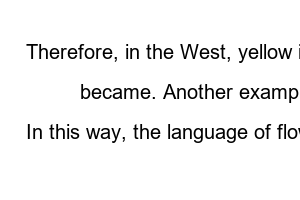꽃말 모음Flower language is a word that was created based on the characteristics of flowers, flower color, scent, shape, etc., and can be different depending on the East or the West, country, or region.
There are cases. Regardless of the East or West, there have been legends and myths about flowers since ancient times, and they can also be found in literary works, historical records, and anecdotes.
The language of flowers was born.
Most of the language of flowers is related to the Western custom of sending flowers to the woman he loved during the Middle Ages to convey silent meanings or feelings.
Most of them were created as religious symbols. Among the flower languages, Greek and Roman myths, legends, and those related to Christianity have meanings.
It is generally common in many countries, including Europe, but there are many cases where it differs depending on the country.
Even for the same flower, there are somewhat different cases in England and France. For example, ‘apple’ in England means ‘temptation’ (Eve’s name in the Garden of Eden).
(refers to eating an apple), but in France, it means ‘to the most beautiful person’, and is similar to Hera, Athens, and Hera in Greek mythology.
It refers to the golden apple thrown in front of the three goddesses of Aphrodite.
Different flower meanings arise depending on the color of the flower. Yellow was a color loved and respected until Roman times, but with the rise of Christianity.
Accordingly, in order to oust those who belong to the old religion in the midst of sectarian strife, the longing for yellow, which had been respected until now, was treated as the most base thing.
They degraded it and instead made blue the most honorable color.
Therefore, in the West, yellow is viewed as an ominous color and has negative images reminiscent of twilight, decadence, disease, death, and jealousy.
It is done. However, in China, yellow is revered as a precious color, and in Japan, the golden-colored boksu plant is a symbol of longevity and happiness.
became. Another example is that red is the color of joy in China and Korea (although it changed somewhat after the division of North and South Korea, it was the color of joy in the 2002 World Cup).
It survives again later) In India, it has the meaning of anger.
In this way, the language of flowers often differs from country to country, depending on their characteristics, colors, etc., due to the country’s historical environment.

